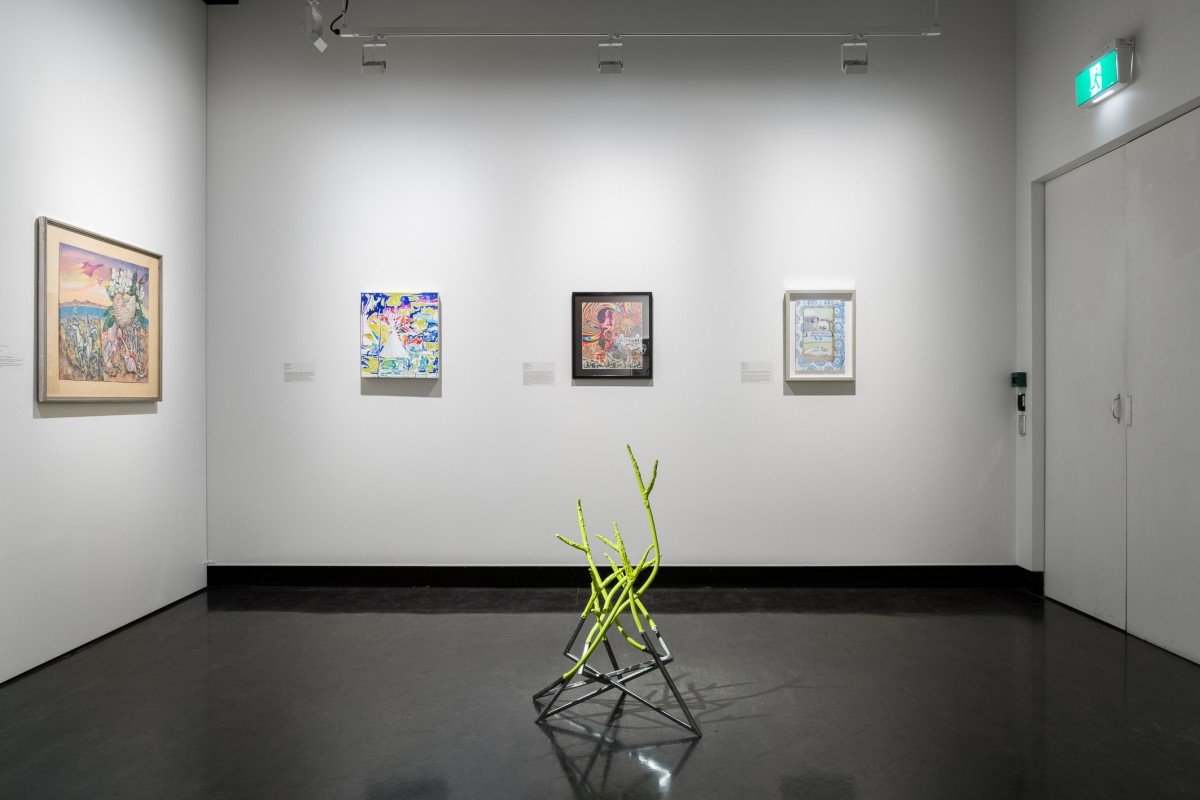Noel Counihan Commemorative Award
Counihan Gallery, 2017


T I M E L A P S E D #2, 2017
Steel, enamel paint
Images: Christo Crocker
The majority of the excess heat generated by the last 250 or so years of fossil fuel emissions is absorbed by the Earth's oceans. When coral is subjected to extreme localised temperature increases, it enters a survival phase and engages a kind of sunscreen layer in an effort to protect itself from the warmer than usual water (above around 32 degrees celsius). This layer is fluro in colour and is a final effort to resist the stressful conditions. If the water cools in time, the coral will return to its normal colour. If not, it bleaches and turns white, not necessarily dead but definitely in a weakened state of being. Some scientists liken this to a form of coral osteoporosis.
In 1998, 2002, 2016, and 2017, the Great Barrier Reef system, particularly the Northern Barrier Reef area beyond Port Douglas, experienced mass bleaching episodes rendering two-thirds of the 3000km long reef system in a weakened state of being. More mass bleaching is predicted. The Great Barrier Reef is utilised by many Australians and visitors alike for restorative recreational purposes, income generation and as a source of protein. A healthy reef contributes far more to the economy via tourism than mining does.
Support the protection of land and waterways and the use of cleaner, more renewable energy systems in order for us to cease being reliant on toxic and exhaustible fossil fuel resources.
Speak out against mega mines such as the Adani Carmichael mine in Queensland, Australia.
In what state of being are we happy to leave Country and the planet for the next generations that follow us?
- Ben Taranto